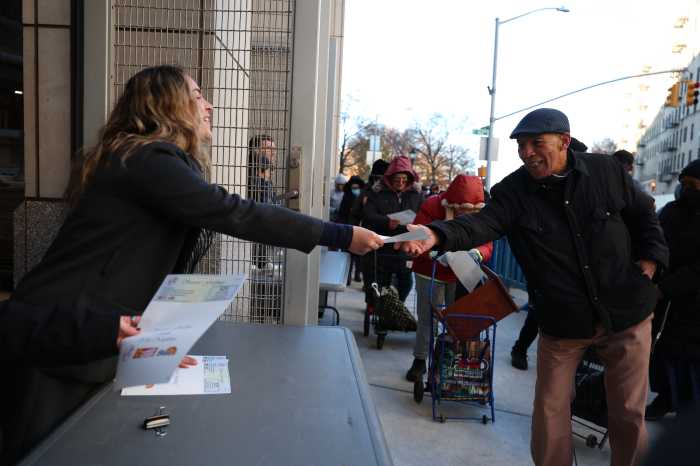While last week’s heatwave caused havoc in Brooklyn with power outages and city preparedness, it remains a question how equipped the city’s current cooling center network is for weekend heatwaves and potential electricity outages come the dog days of August.
A look at the weekend’s outages earlier this month point to the borough’s need to be better prepared for the next heatwave, particularly in access to cooling centers.
Currently, during heat emergencies in which temperatures go north of 100 degrees, the city has a policy of opening its over 500 cooling centers. Data shows that over 10 percent of New Yorkers do not have air conditioning and those centers are meant to make sure they do not have to suffer dangerous heat waves.
“Cooling centers” consist mostly of senior centers, libraries and community centers. Most are not run by the city directly but by independent non-profits, such as the library systems or the Salvation Army.
New York’s most recent heat emergency lasted through Saturday and Sunday, with the city estimating them to be the hottest days it faced in over seven years. “Don’t sit in the heat today — the heat index is over 100 degrees! It’s too dangerous, and everyone needs to stay cool,” tweeted the Mayor’s office on Sunday morning. “If you don’t have air conditioning come to a Cooling Center.”
But many cooling centers’ traditional hours exclude weekends, so many were closed that entire day.
Out of 205 libraries that are part of the cooling center network, only over 40 managed to open on Sunday, July 21, a day for which the city had forecast a heat index of 110. Many other cooling centers opened that day but closed before sundown, which was after 8 p.m. on those two days.
At around 6 p.m. on July 21, Brooklyn communities faced electricity outages and the need for cooling centers extended beyond people who didn’t own an air conditioner. That evening over 30,000 ConEd customers in Canarsie, Georgetown, Mill Basin, Bergen Beach and Flatlands were left without electricity well into the morning.
At that point many cooling centers, including the ones opened specifically for the heatwave, were closed.
The MTA and New York’s Office of Emergency Management (OEM) worked together to dispatch a city bus into Canarsie to give residents an opportunity to cool off. However, one bus seemed inadequate to serve the over 30,000 residents of Canarsie.
“The only cooling center listed on the OEM website last night was P.S. 66 on Foster Ave and East 96th Street. I passed by last night and it was closed, only the alarm was going off – no residents inside cooling. A cooling van on Remsen and Avenue N will not suffice for over 12,000 of your constituents that are still without power,” wrote Floyd Jarvis, a member of the Canarsie Neighborhood Alliance, addressing local elected officials.
Public schools, although operated by the city under mayoral control, are not normally part of the cooling center network.
“During last weekend’s heat event the city expanded our cooling center network to include facilities like public schools and indoor park facilities in an effort to open cooling centers in as many New York City neighborhoods as possible. These facilities are not normally a part of the cooling center network, however the City strove to ensure the safety of all New Yorkers during this heat emergency. Thanks to these efforts more than 70 New York City public schools were opened Sunday and served as cooling centers,” said a OEM Spokesperson Justin Bennett.
In total, the city’s cooling center finder listed 727 locations on Sunday compared to the traditional number of 500.
“Cooling centers in New York City are air-conditioned facilities such as libraries, community centers, and senior centers which are open to the public during extreme heat. Some of these facilities are managed by City agencies, and others are offered by private sector partners to assist the City during a heat emergency. Hours of operation vary depending on each facility’s individual capability to operate as a cooling center at a given time,” said Bennett.










